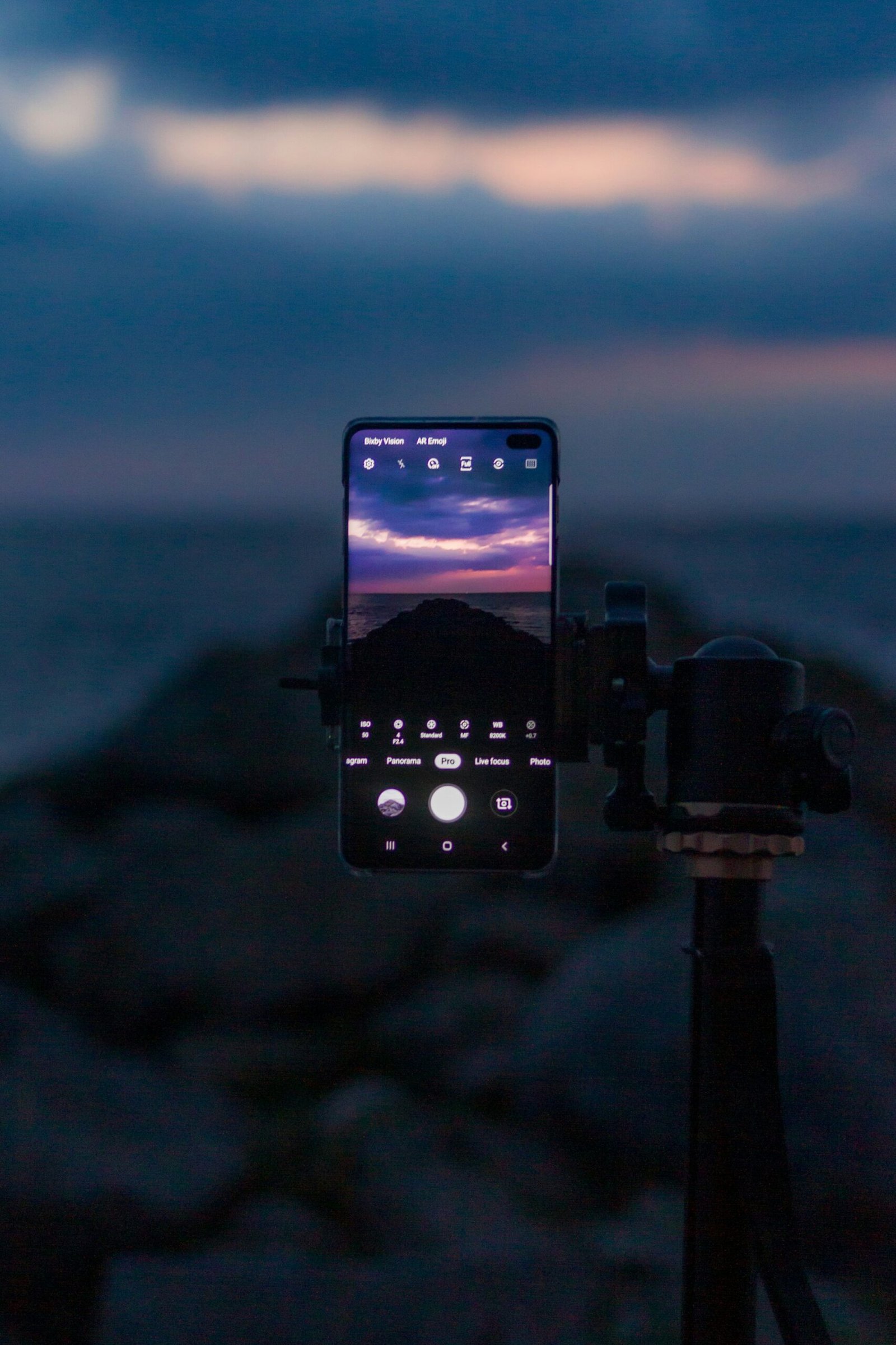Don't miss our holiday offer - 20% OFF!
Mastering Basic Photographic Techniques: A Beginner’s Guide
Introduction to Photography
The art of photography has a rich and transformative history that dates back to the early 19th century. Initially, photography was a cumbersome process, dominated by the use of film and requiring considerable expertise and patience. Over time, the advent of digital technology revolutionized the field, transforming it into an accessible and widely practiced form of artistic expression. Modern photography allows individuals to capture moments with remarkable clarity and ease, utilizing advanced digital cameras and even smartphones.
Technological advancements in photography have had a significant impact on how we perceive and interact with the world. Innovations such as high-resolution sensors, image stabilization, and sophisticated editing software have not only simplified the process but also enhanced the quality of images we can produce. These developments have democratized the art form, allowing a broader audience to engage in photographic pursuits, from casual everyday snapshots to professional-level compositions.
Beyond the technical aspects, photography serves as a powerful tool for visual storytelling. Photographs have the ability to elicit emotions, convey narratives, and connect people across different cultures and generations. A single image can evoke a sense of nostalgia, document historical events, or spotlight social issues, effectively bridging the gap between the observer and the subject. This capacity to tell a story through visuals underscores the profound significance of photography in contemporary society.
As photography continues to evolve, it maintains its essential role in preserving memories and documenting our lives. Whether through the nostalgic charm of black-and-white film or the crisp, vivid details of digital images, the essence of photography remains rooted in its ability to capture the beauty and complexity of the human experience. As we delve deeper into the various techniques that form the foundation of this art, it is crucial to appreciate both its historical context and enduring emotional appeal.
Understanding Your Camera
Modern photography is an art form accessible to everyone, thanks to the wide variety of cameras available on the market today. Whether you’re wielding a DSLR, a mirrorless camera, a point-and-shoot, or even just a smartphone camera, understanding the core components and settings of your device is fundamental to mastering the craft. Each camera type has its unique features and advantages.
DSLR cameras (Digital Single-Lens Reflex) are complex devices favored by many for their versatility and superior image quality. They house large image sensors, interchangeable lenses, and an optical viewfinder. On the other hand, mirrorless cameras have similar capabilities as DSLRs but are typically lighter and more compact. They use an electronic viewfinder or LCD screen to display the image, which can be advantageous for previewing exposure and white balance in real-time.
For those seeking simplicity, point-and-shoot cameras offer a straightforward approach to photography. They come with a fixed lens and automatic settings, making them ideal for quick, casual shots. Lastly, smartphone cameras have revolutionized the photography world. With advanced algorithms and increasingly powerful sensors, they’re convenient for everyday photography and social media sharing.
Fundamental to all these devices are key components like the lens, which determines the light entering the camera; the sensor, which captures the image; and the viewfinder, or screen, where you compose your shot. Mastering these elements, coupled with an understanding of camera settings—aperture, shutter speed, and ISO—is crucial.
Aperture, measured in f-stops, controls the depth of field by adjusting the lens opening, affecting how much light hits the sensor. Shutter speed, measured in seconds or fractions of a second, dictates the duration of light exposure, affecting motion blur and sharpness. ISO impacts the sensor’s sensitivity to light and can influence image noise. Balancing these settings, known as the exposure triangle, is key to producing well-exposed photographs.
Taking the time to familiarize yourself with your camera’s controls and menu systems is indispensable. Spend time exploring the different modes and settings to understand their functions. Practice makes perfect, and through hands-on experience, you will develop an intuitive feel for your camera, enabling you to capture stunning images with confidence.
Mastering Exposure
One of the foundational concepts in photography is the exposure triangle, comprising three core settings: aperture, shutter speed, and ISO. Mastery of these elements is essential for achieving well-exposed and visually appealing photographs.
Aperture, often referred to by its f-stop number, controls the amount of light entering the camera lens. A wider aperture (lower f-stop number) allows more light, resulting in a brighter image and a shallower depth of field. This is particularly useful for portrait photography where a blurred background (bokeh) is desirable. Conversely, a narrower aperture (higher f-stop number) reduces light but increases the depth of field, thus keeping more of the scene in focus. For example, landscapes are often shot with higher f-stop numbers to ensure all elements from foreground to background are sharp.
Shutter speed dictates the duration for which the camera’s sensor is exposed to light. Faster shutter speeds (e.g., 1/1000s) freeze motion, beneficial for capturing fast-moving subjects like sports activities. On the other hand, slower shutter speeds (e.g., 1s) can create motion blur, conveying a sense of movement, which is effective in scenarios like photographing waterfalls or night skies. However, slower shutter speeds necessitate a steady hand or the use of a tripod to avoid unintended blurriness.
ISO measures the sensitivity of the camera’s sensor to light. Lower ISO values (e.g., ISO 100) yield cleaner images with less noise, making them ideal for bright conditions. Higher ISO values (e.g., ISO 3200) amplify light sensitivity, best suited for low-light environments. However, increasing ISO also increases the likelihood of image noise, resulting in grainier shots.
Balancing the exposure triangle involves understanding how these three elements interact. For instance, if you choose a fast shutter speed to freeze action, you’ll need a wider aperture or higher ISO to compensate for reduced light. Similarly, achieving a desired depth of field through aperture adjustments may require altering shutter speed or ISO.
Proper exposure under varying lighting conditions can greatly enhance the quality of your photographs. For bright sunlight, a narrower aperture and lower ISO are typically employed, while indoor or evening shots may require a wider aperture and higher ISO. Mastery of the exposure triangle enables photographers to adapt to diverse settings, ensuring consistent and effective exposure across all photographic endeavors.
The Art of Composition
Composition stands as a fundamental pillar in the realm of photography, shaping the overall impact and aesthetic appeal of an image. Mastering the art of composition involves adhering to several guiding principles which can transform an ordinary photograph into a captivating visual story. Among these principles, the rule of thirds holds significant importance. By mentally dividing the frame into a grid with two horizontal and two vertical lines, photographers can position the subject along these lines or their intersection points, thereby creating a more balanced and engaging image.
Another critical aspect of composition is the use of leading lines. These are lines within the photo that naturally draw the viewer’s eyes towards the main subject. Whether it’s a winding road, a row of trees, or architectural elements, leading lines guide viewers through the image, enhancing its depth and dimensionality. Symmetry, on the other hand, brings a sense of harmony and balance, often evoking a pleasing aesthetic. While perfect symmetry can be mesmerizing, it’s vital to harmoniously combine it with other compositional techniques for dynamic results.
Framing is another effective technique where elements within the scene act as a ‘frame’ around the main subject, focusing attention and adding interest. This could be natural objects like tree branches, or man-made elements like windows and doorways. Furthermore, the utilization of negative space — the empty or less busy areas around the subject — plays a crucial role in emphasizing the subject, providing it room to ‘breathe’ within the frame. It fosters simplicity and clarity, often evoking a quiet elegance.
To internalize these principles, beginners should engage in practical exercises. Start by capturing images adhering to the rule of thirds, adjusting the subject’s position, and observing the effect. Experiment with leading lines by finding or creating paths that direct attention to the subject. Practice framing by incorporating surrounding elements to enclose the scene creatively. Lastly, explore the impact of negative space by simplifying compositions, focusing on minimalism. Through consistent practice and experimentation, these compositional skills will become second nature, enhancing photographers’ ability to create visually striking and impactful images.
Lighting Techniques
Understanding and manipulating light is integral to mastering basic photographic techniques. Light, being the foundational element of photography, can drastically alter the mood, texture, and depth of a photograph. There are two primary lighting sources: natural and artificial lighting. Each offers distinct advantages and potential challenges.
Natural light, provided by the sun, varies in quality and intensity throughout the day. It is generally classified into soft and hard light. Soft light, exhibited on cloudy days or during the golden hours (the hour after sunrise and before sunset), delivers a gentle illumination, minimizing harsh shadows while creating a flattering, even distribution of light. Hard light, often experienced during midday when the sun is directly overhead, produces strong, sharp shadows which can be used to create striking contrasts.
Artificial lighting, typically from sources such as studio lights or flash, offers more control to the photographer. By adjusting the position, intensity, and type of artificial light, photographers can recreate consistent lighting conditions independently of natural variations. Incorporating tools like reflectors and diffusers helps in manipulating light further. Reflectors redirect light to fill in shadows, providing a balanced exposure, while diffusers soften harsh light, emulating the natural effect of overcast skies.
Moreover, the direction of light plays a pivotal role in the composition and impact of an image. Front lighting, where the light source faces the subject directly, tends to flatten features, reducing depth. Side lighting, with the light source positioned at an angle to the subject, accentuates textures and creates more dynamic shadows, bringing out the three-dimensional quality of the subject. Backlighting, where the light source is behind the subject, can add drama and create striking silhouettes.
When shooting at different times of day and under varying weather conditions, photographers should adapt their techniques to capitalize on the prevailing lighting. Early morning and late afternoon often provide the best natural lighting conditions, while shooting on overcast days can prevent harsh shadows. Conversely, understanding how to strategically use artificial lighting setups indoors or in controlled environments can compensate for and augment natural light, ensuring consistent and high-quality photographs.
Basic Post-Processing
Post-processing plays a pivotal role in the realm of digital photography by enhancing the final image to meet aesthetic and technical standards. Beginner photographers often find themselves overwhelmed with the myriad of available software tools, yet two stalwarts in the industry—Adobe Lightroom and Adobe Photoshop—stand out due to their versatility and comprehensive functionalities.
Adobe Lightroom is known for its intuitive interface, making it an excellent starting point for novices. It allows basic edits such as cropping, adjusting exposure, color correction, and sharpening, all of which can transform an ordinary photo into a remarkable one. Cropping is often the first step, enabling photographers to improve composition and focus on the subject. Exposure adjustments help rectify issues with lighting, either by brightening underexposed images or reducing glare in overexposed ones. Color correction, including white balance adjustments, ensures that colors in the photo appear true to life. Finally, sharpening the image brings out details, making it more visually appealing.
Adobe Photoshop, while more complex, offers unparalleled control over photo editing. It goes beyond basic edits, allowing for intricate manipulations and creative enhancements. Understanding key tools like layers, masks, and filters can significantly broaden a photographer’s post-processing capabilities.
Despite the powerful tools at their disposal, photographers must navigate the ethical landscape of photo editing. Maintaining the integrity of the original scene is paramount. Over-editing can lead to misleading depictions, which may be particularly problematic in journalism and documentary photography. For instance, while it is acceptable to adjust exposure to better match what was experienced, adding or removing substantial elements can distort the truth and undermine credibility.
In essence, mastering basic post-processing techniques involves a balance between technical skills and ethical considerations. By leveraging tools such as Adobe Lightroom and Photoshop, photographers can enhance their images while staying true to the authenticity of the scenes they capture. This responsible approach ensures that the artistry of photography remains both effective and credible.
Shooting in Different Scenarios
Mastering photographic techniques involves adapting to diverse shooting scenarios. Each type of subject or scene, whether it is landscapes, portraits, action shots, or low-light environments, presents unique challenges that require tailored strategies for optimal results.
Landscapes: When photographing landscapes, capturing the vastness and beauty of the scene is key. Utilizing a wide-angle lens can help encompass more of the view. Employing a low ISO setting ensures minimal noise, and a small aperture (high f-stop number) increases the depth of field, keeping the entire scene sharp from foreground to background. Additionally, shooting during the “golden hours”—shortly after sunrise or before sunset—can enhance the image with warm, soft lighting.
Portraits: Portrait photography focuses on the subject, typically a person, emphasizing their features and expressions. A prime lens with a wide aperture (such as f/1.8 or f/1.4) can create a pleasing bokeh effect, blurring the background while keeping the subject sharp. Positioning the subject in natural light and avoiding harsh midday sunlight can prevent unflattering shadows. For indoor shoots, using a reflector or diffused lighting can ensure even exposure.
Action Shots: Capturing fast-moving subjects, like in sports or wildlife photography, demands quick reflexes and specific settings. A high shutter speed (1/500 second or faster) freezes motion, whereas using continuous shooting mode (burst mode) increases the chances of getting that perfect moment. Autofocus tracking systems, available in many modern cameras, can help maintain focus on moving subjects. A telephoto lens can bring distant action closer without compromising image quality.
Low-Light Environments: Low-light photography poses one of the most significant technical challenges, often requiring higher ISO settings to increase sensor sensitivity. However, this can introduce noise, so balancing ISO with a wide aperture and longer exposure times is crucial. Using a tripod stabilizes the camera during longer exposures, reducing blur. Additionally, external light sources, such as a flash or portable LED lights, can effectively illuminate subjects and scenes.
Each photographic scenario demands a nuanced approach. By selecting suitable lenses, adjusting camera settings, and employing the right compositional techniques, photographers can creatively and effectively capture the essence of diverse scenes and subjects.
Building Your Photography Portfolio
For aspiring photographers aiming to elevate their skills, constructing a well-rounded photography portfolio is essential. The portfolio serves as a visual resume, showcasing the breadth of your abilities and your unique artistic voice. Selecting and organizing your best work is the first step toward creating a cohesive collection that reflects both quality and diversity.
When curating your portfolio, the importance of presenting a range of skills and styles cannot be overstated. Include varied subjects such as portraits, landscapes, and abstract compositions. Demonstrating versatility will make a compelling case for your adaptability and proficiency in different photographic techniques. However, it’s equally critical to maintain a consistent level of excellence across all pieces you select, ensuring that each photograph represents your best work.
Presentation methods are another factor to consider. In today’s digital age, an online portfolio is indispensable. Websites like Adobe Portfolio, Squarespace, or even Instagram can serve as platforms to display your photographic achievements effectively. Ensure your online presence is user-friendly, with high-quality images and a structured layout. Equally important is the physical portfolio, which can be beneficial during in-person interviews or gallery showings. Invest in high-quality prints and a professional-grade portfolio book to leave a lasting impression.
Constructive feedback is invaluable in the journey of continuous improvement. Engaging with fellow photographers, mentors, and photography communities can provide insightful perspectives and critiques that are crucial for artistic growth. Participating in critique sessions or workshops helps in identifying areas needing enhancement and validating your strengths.
Ultimately, the process of building and refining your photography portfolio is ongoing. As your skills evolve, so should your collection of work. Keep updating your portfolio with new and improved pieces to reflect your current capabilities and artistic vision. This dynamic approach ensures that your portfolio remains an accurate representation of your photographic journey, consistently showcasing your growth and ever-improving talent.


